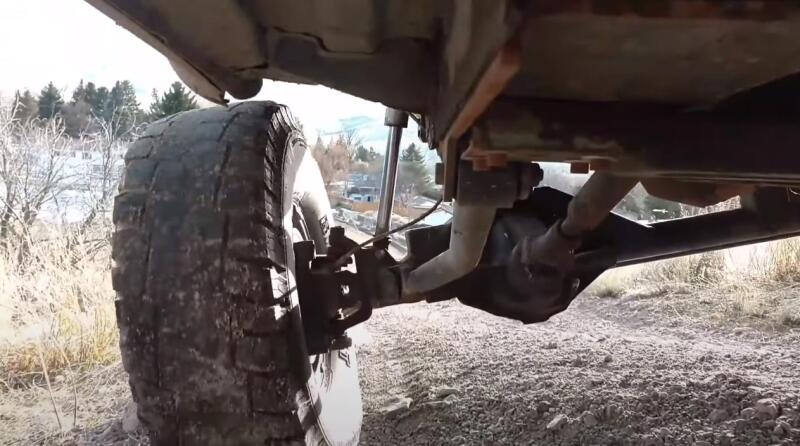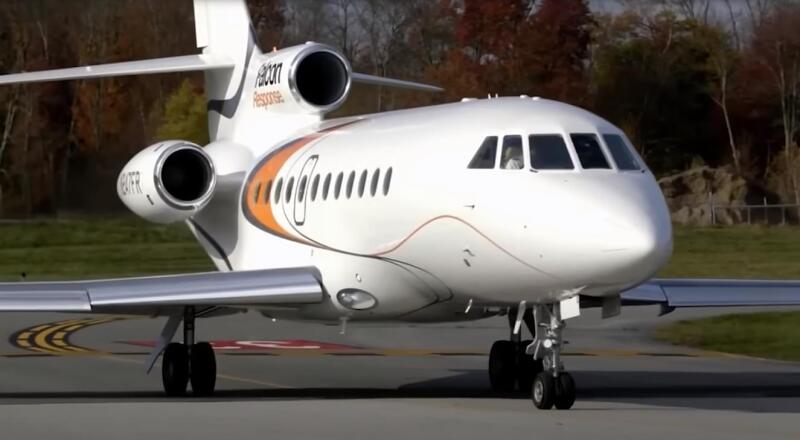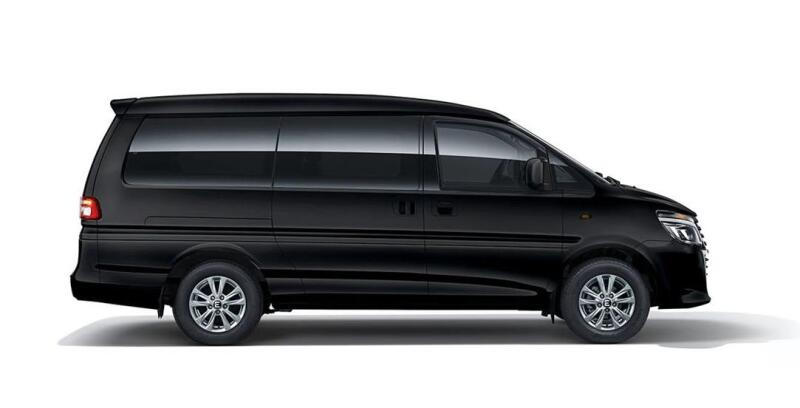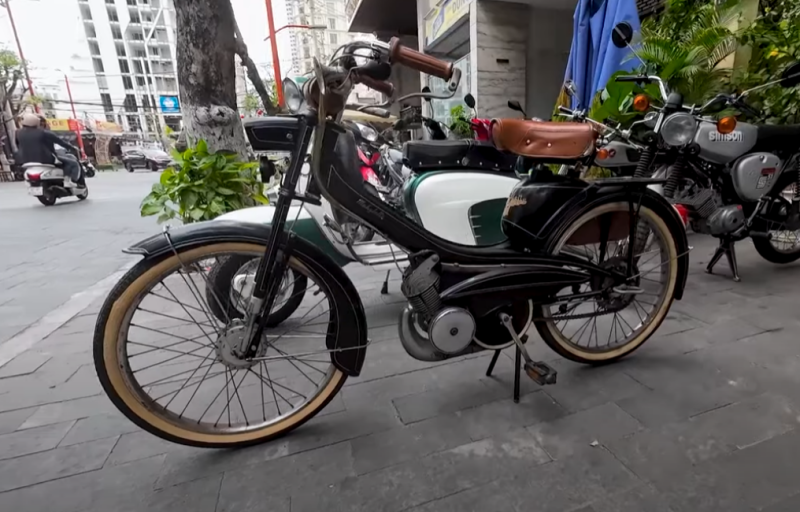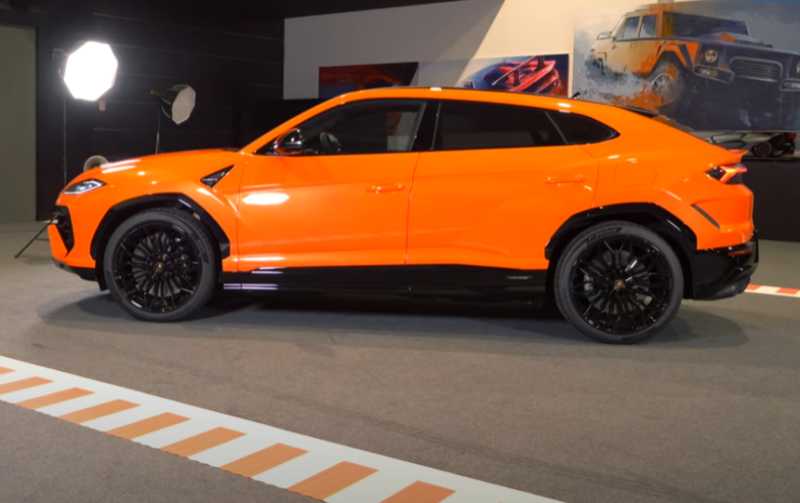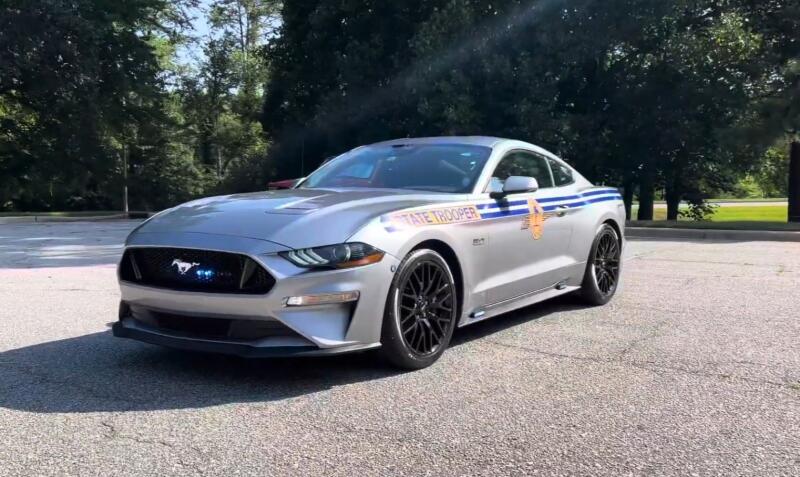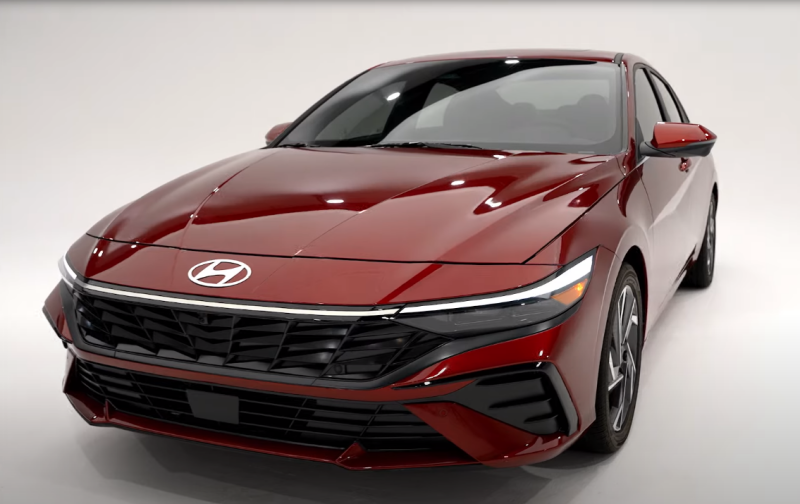A bit of history
The owner of the American company Olds Motor Works, engaged in the production of cars, presented his new model to the public in 1901. But the businessman suffered a misfortune: his factory burned down and managed to save one of the aforementioned copies. To get things going, the designer decided to start (the first in the world!) Serial production of his model in order to protect himself from bankruptcy.
 The same OldsMobil curved-dash with a real car rear axle. Photo: YouTube.com
The same OldsMobil curved-dash with a real car rear axle. Photo: YouTube.comAnd he succeeded: in the 900s, his OldsMobil curved-dash was one of the most popular and bought cars. The designer, for quick assembly in his car, used the transmission of torque to the rear wheels, rigidly attached to the cross beam, using a chain. This is how the first road bridge appeared. By the way: this principle is used today in the design of tricycles. Similar bridges were disassembled in half for the convenience of serial production.
 The first road bridge is still in use today. Photo: YouTube.com
The first road bridge is still in use today. Photo: YouTube.comIn 1903, the American Clarence Spicer came to light, offering a cardan with crosses of his own design, which he managed to patent. However, Spicer's company did not last long and was bought by A. Dana. This information is of interest in the sense that later bridges will be called "spicer" and "dana" with different indices: for example, Dana 60. Everything happened by analogy with "copiers" - today many do not suspect that this is the name of Rank Xerox , not the machine itself.
 Bridge type "spicer" for UAZ. Photo: YouTube.com
Bridge type "spicer" for UAZ. Photo: YouTube.comAnd if you dig a little deeper, it turns out that the Salisbury transmission company in 1919 was part of Spicer's company and therefore all the bridges produced by him were called "Salisbury" out of habit in England. And then there is the Timken axle with split gear housings, also named after its inventor and the William Timken Detroit Company.
How are road bridges classified?
One of the popular designs found on rear-wheel drive vehicles is a “stocking” beam, inside which are the axle shafts, and hubs and the main gear are attached to them. We are talking about the leading unmanaged axle, which, for example, is on the entire passenger Soviet "classic".
Bridges with split and fixed beams
The latter have the highest rigidity and are most often installed on heavy trucks and buses. Here is a cast crankcase in which the sleeves of the axle shafts are fixed. Bridges equipped with a split beam can be found on cars and commercial vehicles. Such structures are disconnected into two parts, each of which is attached to the "covers" of the axle shafts.
 Testing the rear drive axle. Photo: YouTube.com
Testing the rear drive axle. Photo: YouTube.comAccording to the manufacturing method, there are stamped and cast bridges. The latter are considered the most reliable. However, the manufacturing technology is complex and such units are expensive. Stamped bridges are slightly less reliable, as they are made using welding.
Division of bridges by type of suspension
There are only two types of structures. The first one is uncut. This system assumes that the wheels are rigidly connected to each other using a beam (see above). If one of them changes its position, then the second “repeats the manipulations” of the first. For example, if you hit a hillock with your left wheel, then it will tilt, like the right one (and the whole beam too). As a result, the whole car will also tilt. On the one hand, this causes discomfort for the driver and passengers, on the other hand, it ensures the reliability of the structure. Therefore, continuous axles are often installed on frame SUVs operating in difficult conditions. But this does not mean that the opposite type of construction is not used on them.
 You can clearly see how the wheels on split axles work independently. Photo: YouTube.com
You can clearly see how the wheels on split axles work independently. Photo: YouTube.comAnother thing is a split bridge. In this case, the wheels are connected to the beam through the suspension elements. When hitting an obstacle, both slopes remain in a vertical position and parallel to each other. The body almost does not heel (depending on the size of the ground clearance). This design provides a more comfortable passage through rough terrain, but is less reliable than a continuous one.
Steered and combined axles
The first include part of the steering mechanism. Most often, such a design is located in front. If the car has several axles, then there can be 2-3 or more controlled axles. Remember: for example, in some types of rocket carriers carrying heavy weapons, not only the front wheels turn, but also the “middle” ones.
 There are two steerable front axles. Photo: YouTube.com
There are two steerable front axles. Photo: YouTube.comA similar system is used on some multi-axle wheeled all-terrain vehicles. But even some civilian trucks, cars are able to "steering".
Front axles
If it is continuous, then this is a beam, at the ends of which there are steering knuckles: wheel hubs are fixed on their trunnions. The requirements for such a bridge are simple: lightness, strength and rigidity. This provides a steel I-beam. It is usually curved in the middle to keep the engine low to help stabilize the car.
But it also happens that the controlled axle is located at the rear. Most often, such a scheme is used on municipal or agricultural machinery. An example is the Niva SK-5 combine, in which not the front wheels turn, but the rear wheels.
 The huge CK-5 turned thanks to those small rear wheels. Photo: YouTube.com
The huge CK-5 turned thanks to those small rear wheels. Photo: YouTube.comWith regard to combined structures, this refers to a split bridge, which is both leading and controlled. This scheme is extremely popular and is used in most front-wheel drive passenger cars. An example is the VAZ-2108-15. Here, the differential with the main gear is placed in the same housing along with the gearbox. Immediately - a drive in the form of CV joints. Those on the outside ensure the rotation of the wheel, and those on the inside ensure its mobility in the vertical direction.
Support bridges
A simple design that looks like a solid (most often) cross-beam (I-beam or pipe) to the ends of which hubs are attached. A striking example of a supporting bridge is any front-wheel drive VAZ car. Behind him is such a system. Due to its simplicity and solid beam, this scheme is considered the most reliable of all types of rear suspension.
 The rear beam can also break if you drive where it is not necessary (Lada Granta). Photo: YouTube.com
The rear beam can also break if you drive where it is not necessary (Lada Granta). Photo: YouTube.comSupporting structures are an indispensable attribute of semi- and full trailers of trucks.
through bridges
These are specific or "highly specialized" systems, which can be found on trucks with several drive axles. The function of the thru-axle is to partially transmit torque further.
 Three-bridge KAMAZ with a through passage design. Photo: YouTube.com
Three-bridge KAMAZ with a through passage design. Photo: YouTube.comSimilar systems are used, for example, on KAMAZ vehicles with high cross-country ability.
Reducer
Included in the design of the drive axle, it can be front and rear. In the first case, it is most often built into the box. If the car has rear-wheel drive, the gearbox is installed in the middle of the axle. For 4x4 cars, there are two similar mechanisms. The drives correspond to the number of gearboxes.
 Reducer rear-wheel drive VAZ in a separate form. Photo: YouTube.com
Reducer rear-wheel drive VAZ in a separate form. Photo: YouTube.comWhen talking about a gearbox, they mention the gear ratio. The higher it is, the greater the mass of the car, which will not move quickly, but will carry more cargo. And vice versa: a smaller gear ratio is typical for machines with low weight, but high speed.
Results
A bridge is a part of a car that connects the wheels and takes on the load that it transfers to the supporting structure. The main properties of the described mechanism are type and flexibility. For example, it makes no sense to constantly overcome bad roads in a car with a split bridge: it will not last long. And vice versa, driving regularly with a one-piece construction on highways is tiring: it will react to every bump.
